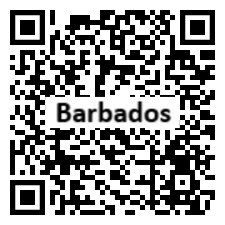Country Summary




Introduction
Background
The island was uninhabited when first settled by the British in 1627. By 1720, Barbados was no longer a dominant force within the sugar industry, having been surpassed by the Leeward Islands and Jamaica. Social and political reforms in the 1940s and 1950s led to complete independence from the UK in 1966. On 30 November 2021, Barbados became a republic.
Geography
Area
total: 430 sq km
land: 430 sq km
water: 0 sq km
Climate
tropical; rainy season (June to October)
Natural resources
petroleum, fish, natural gas
People and Society
Population
302,674 (2022 est.)
Ethnic groups
African descent 92.4%, mixed 3.1%, White 2.7%, East Indian 1.3%, other 0.2%, unspecified 0.3% (2010 est.)
Languages
English (official), Bajan (English-based creole language, widely spoken in informal settings)
Religions
Protestant 66.4% (includes Anglican 23.9%, other Pentecostal 19.5%, Adventist 5.9%, Methodist 4.2%, Wesleyan 3.4%, Nazarene 3.2%, Church of God 2.4%, Baptist 1.8%, Moravian 1.2%, other Protestant 0.9%), Roman Catholic 3.8%, other Christian 5.4% (includes Jehovah's Witness 2.0%, other 3.4%), Rastafarian 1%, other 1.5%, none 20.6%, unspecified 1.2% (2010 est.)
Population growth rate
0.26% (2022 est.)
Government
Government type
parliamentary republic; a Commonwealth realm
Capital
name: Bridgetown
Executive branch
chief of state: President Sandra MASON (since 30 November 2021)
head of government: Prime Minister Mia MOTTLEY (since 25 May 2018)
Legislative branch
description: bicameral Parliament consists of:
Senate (21 seats - 18 for current term; members appointed by the president - 12 on the advice of the prime minister, 2 on the advice of the opposition leader, and 7 at the discretion of the president)
House of Assembly (30 seats; members directly elected in single-seat constituencies by simple majority vote to serve 5-year terms)
Economy
Economic overview
import-driven economy; dependent on US trade; maintains a pegged exchange rate to the US dollar; high Human Development Index; heavy tourism; reducing government debt to improve fiscal health; launched major agricultural subsidy program to improve food security
Real GDP (purchasing power parity)
$3.7 billion (2020 est.)
Real GDP per capita
$12,900 (2020 est.)
Agricultural products
sugar cane, poultry, vegetables, milk, eggs, pork, coconuts, pulses, sweet potatoes, tropical fruit
Industries
tourism, sugar, light manufacturing, component assembly for export
Exports
$485.4 million (2017 est.)
Exports - partners
US 21%, Poland 14%, Jamaica 8%, Guyana 6%,Trinidad and Tobago 6% (2019)
Exports - commodities
rums and other hard liquor, ships, orthopedic appliances, cement, packaged medicines (2019)
Imports
$1.52 billion (2017 est.)
Imports - partners
United States 35%, Trinidad and Tobago 14%, China 9%, Netherlands 5% (2019)
Imports - commodities
refined petroleum, ships, cars, shipping containers, packaged medicines (2019)
Exchange rates
Barbadian dollars (BBD) per US dollar -
Page last updated: Wednesday, November 16, 2022
